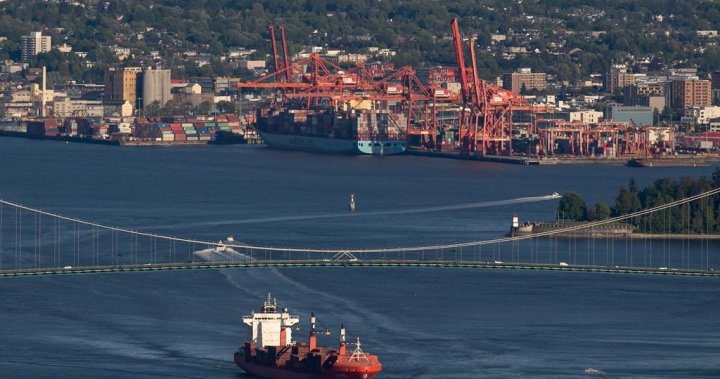The ship strike and tragic collapse of Baltimore’s Francis Scott Key Bridge has highlighted the potential risks faced by two key bridges in Metro Vancouver – the Lions Gate and Ironworkers Memorial bridges. While there has never been a catastrophic collision at these bridges, past engineering reviews have identified the massive support piers as a key vulnerability in case of a ship impact. The provincial government is currently designing barriers to protect the bridges’ pier structures, including a rock berm for the south tower of the Lions Gate Bridge and in-water bollards for the Ironworkers Bridge. These protective measures are expected to take about a year to design and implement.
Environmentalists are concerned about the expected seven-fold increase in tanker traffic that will soon transit both bridges, as a result of the Trans Mountain pipeline expansion going online. There are worries about the potential risks of a vessel strike on the Ironworkers Bridge and the possibility of a catastrophic oil spill in the Burrard Inlet. In 2016, a group of Concerned Professional Engineers produced a report warning of a potential bridge disaster involving a massive oil tanker and the Ironworkers Bridge. Federal regulators appeared to have dismissed the prospect outright, leading to frustration among environmental advocates regarding the lack of meaningful action to address these risk factors.
The province insists that the risk of a collision is minimal due to the Vancouver Fraser Port Authority’s strict navigation policies, including piloting requirements, traffic control zones, and mandatory escort tugs. Escort tugs are required for all large vessels passing through the Lions Gate Bridge, providing an additional safety measure in case a vessel loses power. However, environmentalists maintain that the increased vessel traffic will result in increased risk, and are nervous about the potential for accidents in the future. The lack of meaningful action to address the risk factors highlighted in the report by Concerned Professional Engineers is a cause for concern among advocates.
Engineers are working on designing protective barriers for the Lions Gate and Ironworkers bridges, including a rock berm for the south tower of the Lions Gate Bridge and in-water bollards for the Ironworkers Bridge. These measures are intended to deflect an approaching ship and prevent a direct impact on the support piers of the bridges. The design work for these protective barriers is expected to take about a year to complete. Although the risk of a collision is considered minimal by the provincial government, the concerns raised by environmentalists about the increased vessel traffic due to the Trans Mountain pipeline expansion remain unresolved.
The tragic collapse of Baltimore’s Francis Scott Key Bridge serves as a stark reminder of the potential risks faced by key bridges such as the Lions Gate and Ironworkers Memorial bridges in Metro Vancouver. Collaborative efforts between engineers, government officials, and environmental advocates are crucial in addressing these risks and ensuring the safety of the bridges and surrounding areas. The implementation of protective barriers and strict navigation policies are important steps in reducing the potential for accidents and mitigating the risks associated with increased vessel traffic in the region. Continued monitoring and proactive measures will be essential in safeguarding the bridges and minimizing the likelihood of a catastrophic event.


